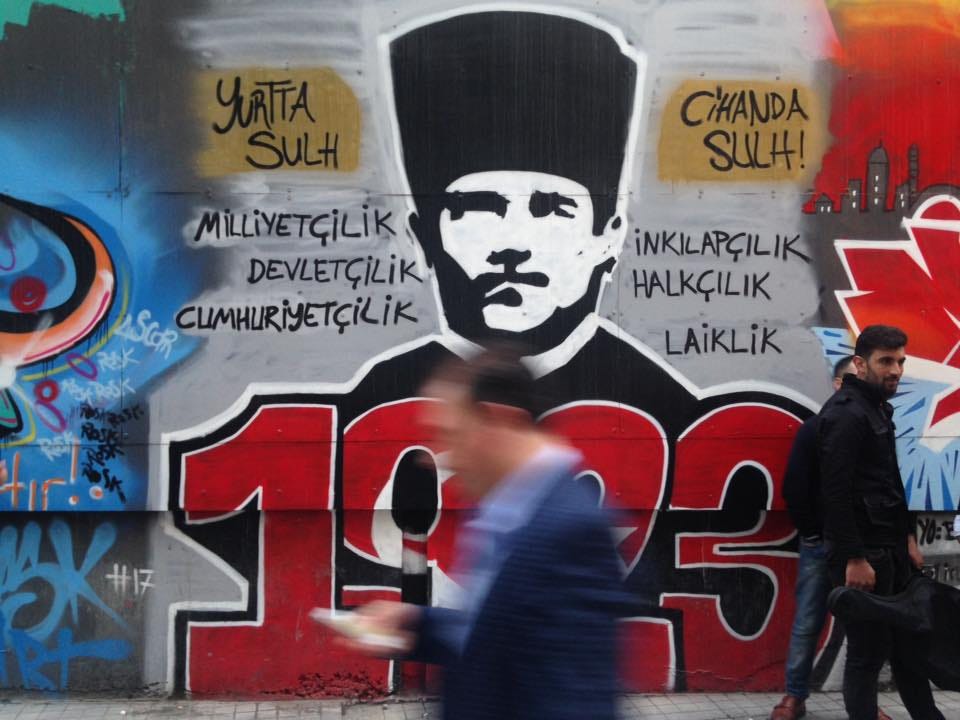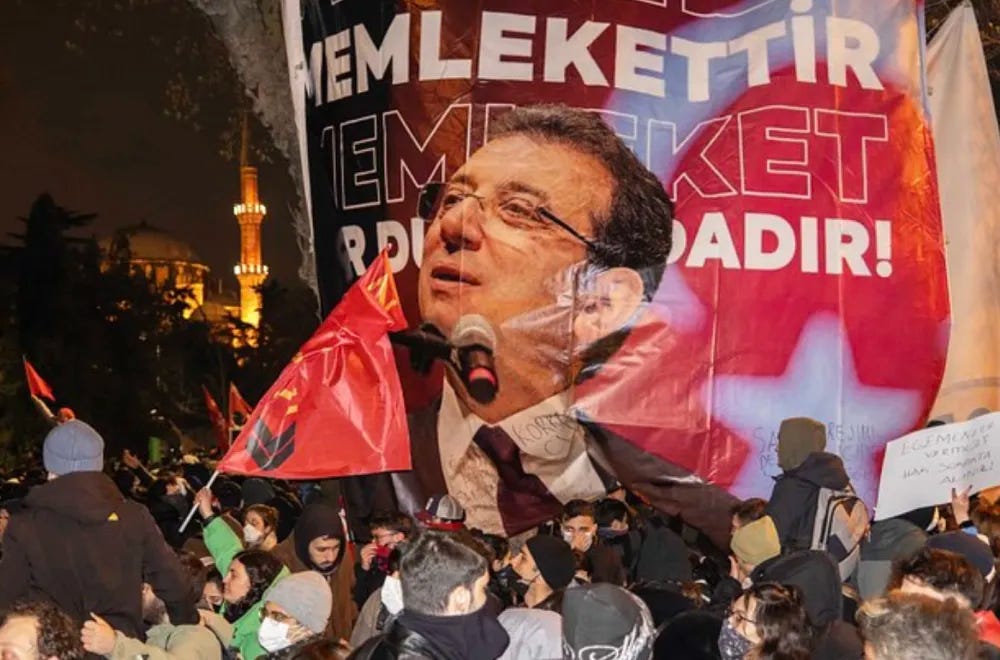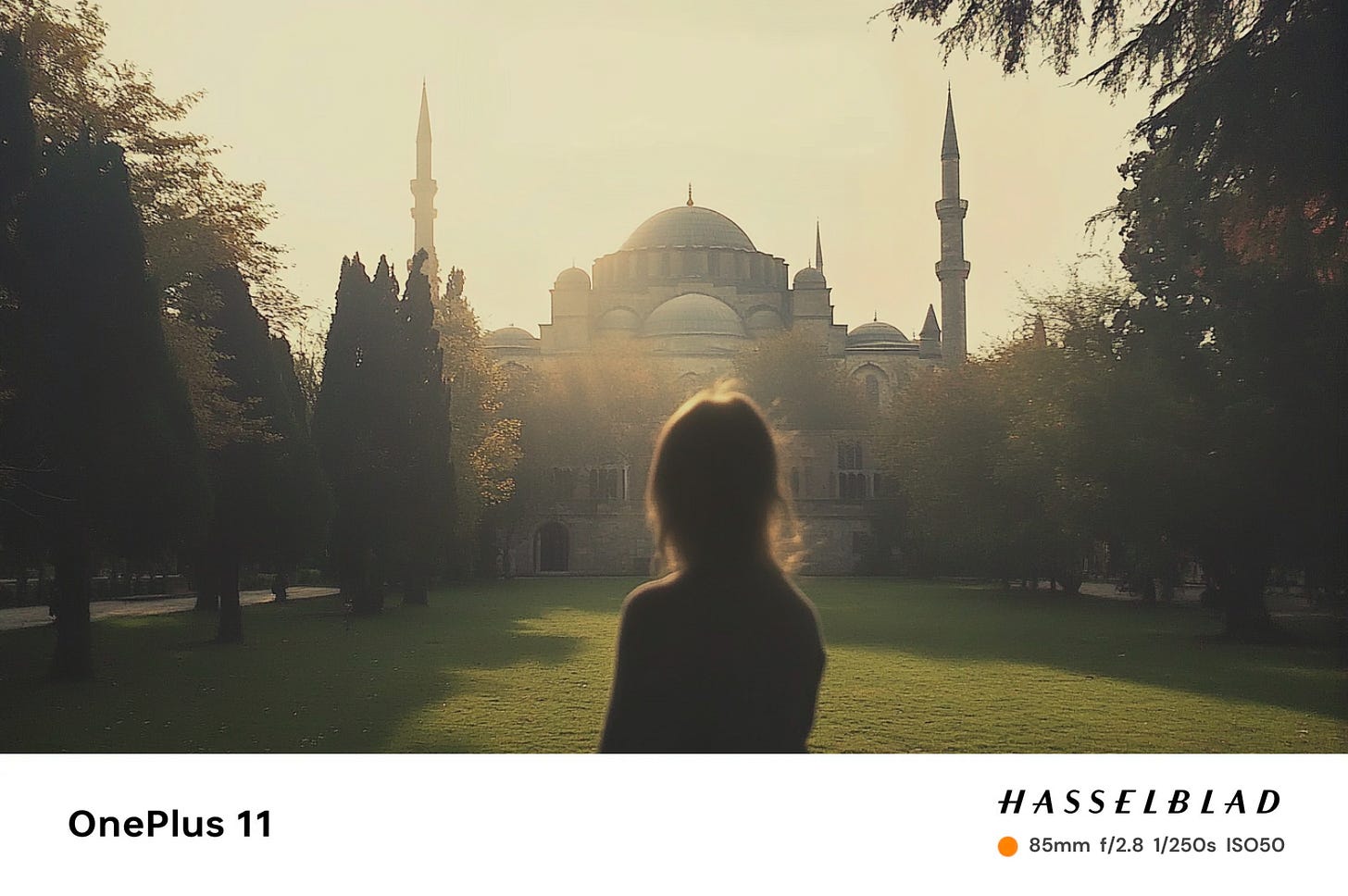On a sunny Monday morning of May 5th, I sat on a crowded ferry as sunlight streamed across the Bosphorus Strait. Seagulls circled overhead while distant prayers echoed from mosques, giving me a visceral sense of Istanbul's unique character.
This wasn't my first time in Turkey. What was meant to be a brief stop-over for work unexpectedly turned into a historical pilgrimage because of the conversations I had with local friends.
1. Constantinople: Capital of Three Empires
The Hagia Sophia is a must-see for any visitor to this city. Not far from this magnificent cathedral stands the Obelisk of Theodosius—an ancient Egyptian monument rising majestically in the center of the square.
My Turkish friend Aylin told me, "Every stone here is history. You know this obelisk? It was specially cut and transported from Egypt in 330 AD by Emperor Constantine the Great. He ordered this monument with ancient inscriptions to be erected here, and named this city after himself—Constantinople. If you look closely, the base of the obelisk has carved illustrations showing how it was transported from Egypt."

Indeed, looking at the map, Constantinople spans two continents, and its geographical prominance gave this city unparalleled strategic value, making it a crucial hub for Eurasian trade.
"You know, this was the capital of three great empires of the old world," Aylin explained proudly. "The Roman Empire for several centuries, the Byzantine Empire for over a thousand years, and the Ottoman Empire for six hundred years. Even China, with its thousands of years of civilization, doesn't have a single city that can compare."
Especially the Byzantine Empire—leveraging Constantinople's strategic position at the center of the Silk Road, connecting East and West, it created the most successful economic system of the medieval period. This name continued from the Roman Empire until the early 20th century, when the city was renamed Istanbul as it expanded—the word derives from a local phrase "eis tin polin," literally meaning "to the city."
2. The Ottoman Empire: The Art of Inclusion as a ruler
Walking casually with Aylin through the courtyards of Topkapi Palace, I posed a naive and somewhat rude question: "Why don't you look like what I expected a Turkish person to be?" Aylin’s skin tone was pale-white and had very defined facial features—if she hadn't told me herself, I would have mistaken her for European.
Aylin chuckled, seemingly not offended at all. "That's the charm of Turkey," she said, stroking an ancient palace column with one hand. "We are Turks—but it's hard to define clearly. On the street you can see people with black hair, blonde hair, blue eyes, green eyes, and very dark skin. Turkish people are a historical mixture."
She paused, gazing toward the distant Bosphorus: "You know, the origins of major Eurasian peoples are all mysterious. They say the Celts originated right here—a tribe from Anatolia crossed the strait, migrated north, and eventually became the Gauls and Celts of Europe."
"So you're saying Europeans actually come from Turkey??" I was somewhat surprised.
"Some of my European friends have done DNA testing and found they all have some Anatolian ancestry, because for thousands of years people have continuously migrated through here. This has always been humanity's crossroads."
Following this topic, I curiously asked how Turkey historically managed such diverse peoples.
She explained that after the Ottoman Empire conquered the Mediterranean and established its capital in Constantinople, it adopted a system called the “Millet system”. The rulers said, “Although we are Muslims, I allow you to maintain your own religion and culture. Greeks had Greek courts, Armenians had Armenian schools, Jews had Jewish communities. You just need to pay some extra taxes for protection."

This inclusive and pragmatic policy created an unprecedented multi-ethnic empire. At its peak in the 16th century, Europe's total population was about 90 million, while the Ottoman Empire alone had 28 million people.
"But," Aylin's tone became somewhat hesitant, "this diversity also planted the seeds for later fragmentation. When nationalism became popular in 19th-century Europe, various ethnic groups within the Ottoman Empire began to awaken, all learning from the spirit of the French Revolution and pursuing their own nation-states."
She led me to the palace's observation deck, looking out at the modern city skyline in the distance. "The Greeks were the first to start independence movements. They cleverly combined religion and ethnicity, saying 'We're not just Greeks, we're Christians,' which won them support from Tsarist Russia. Then came the Bulgarians, Serbs, Albanians... one after another."
"What about the Kurds?" I asked, thinking of this name I often heard in the news.
Aylin sighed. "The Kurds are one of the most tragic peoples. They're distributed across the border regions of Turkey, Syria, Iraq, and Iran, with a total population possibly in the tens of millions, but they've never had their own country. Even now, this problem remains unresolved. Many Kurds are still fighting for their 'nationalist' dreams. But no government will allow such separatist forces to take root in their own country."
"The 'legacy' of a multi-ethnic empire," I said with some irony.
"Yes," Aylin nodded. "The Ottoman Empire's inclusive policy created its thousand-year glory, but also predetermined its fragmentation. When every ethnic group began pursuing 'pure' nation-states, diversity became a fatal weakness. This is history's irony: yesterday's advantage of an empire might become today's burden under a new wave."
"Exactly," I responded. "Look at the past decade—there was a trend toward globalization and multiculturalism, but now many countries are seeing the rise of right-wing political forces, stirring up waves of nationalism and statism. It's like a Chinese saying from the Three Kingdoms:
'The empire, long divided, must unite; long united, must divide.’”
A gentle breeze swept through the palace courtyard, bringing a refreshing coolness. In this former center of power that once ruled such vast territories, we discussed these eternal, recurring themes of ethnicity and state, inclusion and division, while history's whispers echoed on the breeze.
3. Mustafa Kemal Ataturk: Architect of Modern Turkey
The next day, I took a ferry to Princes' Island, just half an hour from Istanbul's city center. This small island had served as an imperial exile for royal families receiving the "cold palace" treatment, later evolving into a celebrity vacation and refuge spot.
Walking around the car-free island, with only bicycles and aging low buildings, time seemed to stand still—perfect for contemplating this country's thousand-year journey. Ataturk's portraits were omnipresent: adorning building murals, hanging as flags outside homes, and even appearing in street art.

I remembered another Turkish friend, Resul, once told me that modern Turkey's founding father, Mustafa Kemal Ataturk, would be roughly equivalent to Chairman Mao's status in China. On May 16, 1919, he secretly departed from Princes' Island for Anatolia, beginning the Turkish War of Independence. At the time, the Ottoman Empire had been defeated, Constantinople was occupied by British and French forces, and Kemal realized that he must organize a national liberation movement. He chose to stay temporarily on Princes' Island, then quietly left by a small boat, beginning the journey that would change Turkey's destiny.
After several years of war, when the Republic of Turkey was established in 1923, Kemal brought thorough secular reforms. Politically, he advocated separation of relgion and state, abolished the Caliphate system, and replaced the Sultanate with a parliamentary system. Culturally, the new Turkish Republic abandoned the Arabic calendar and adopted the Western Gregorian calendar, Arabic script was also abolished in favor of Latin letters. In terms of social systems, he advocated gender equality, granted all Turkish women the right to vote, and legislated against polygamy. He even banned the traditional fez hat, believing this attire represented the old, corrupt Arab Muslim world. He said, "We must face west and wear Western-style hats," striving to show the world a unified, nationally identified new Turkey.
This was like a social experiment running at 2x speed, but he succeeded. In just ten years after the new republic's establishment, Kemal completely changed Turkey's identity, transforming it from an Islamic empire into a secular modern state, forming a multi-ethnic integrated nation and completely escaping the tragic history of being carved up by European forces during the Ottoman Empire's final period.
Therefore, in Turkey, locals respectfully call Kemal "Ataturk," meaning "Father of the Turks." This title wasn't easily earned—it was specially granted by the Turkish Grand National Assembly through legislation in 1934. He not only led Turkey to victory in the War of Independence but, more importantly, painted a completely new modernization vision for Turkey and successfully turned that vision into reality.
4. Erdogan's 20-Year Rule: Going Against Ataturk’s legacy?
In the evening, at a small restaurant overlooking the Bosphorus, I chatted with my friend Arif about current changes in Turkish politics.
"Although Erdogan himself is a product of secular Turkey—he was born and raised in Ataturk's new Turkey—over the past 20 years, he has tried to completely overturn Ataturk's legacy by reintroducing Islamic forces into the political system."
Arif took a sip of rakı and continued: "Erdogan was originally Istanbul's mayor, then became Turkey's Prime Minister starting in 2003. He governed under the parliamentary system for 11 years. As Prime Minister, he had to negotiate with parliament—the decision-making process was complex. Even so, during his early tenure, through freemarket economy, Turkey's GDP grew from $230 billion in 2003 to nearly $900 billion in 2013. He also promoted a series of infrastructure construction—Istanbul Airport, the third Bosphorus bridge, high-speed rail networks. These 'new' things let ordinary people tangibly feel the life improvement brought by economic development."
"But he wasn't satisfied," Arif took another sip and lowered his voice: "At that time Erdogan kept claiming Turkey needed 'strong leadership' to respond to regional turmoil and economic challenges. In 2014, he became president. According to the constitution then, as president he could only serve one additional term and would have to step down by 2019."
"The turning point was the 2016 failed coup attempt, which gave Erdogan a good reason to push for a constitutional referendum. He said Turkey faced internal and external threats and needed more efficient decision-making mechanisms. After the 2017 constitutional referendum passed, he successfully changed Turkey from a parliamentary to a presidential system. After winning the 2018 elections, he officially became the first president under the presidential system, concentrating all power in himself."
Arif quickly glanced around and whispered: "And because of the constitutional change, his term was recalculated—he can continue governing until 2028, maybe even longer."
I detected the subtle shift in Arif's tone and pressed: "Do voters buy into this?"
"You've hit the nail on the head," Arif's tone became more serious. "Istanbul citizens are highly educated and have some exposure to Western democratic systems through news media, so their support for Erdogan has been declining in recent years. His political opponent when he barely won last time was actually from Istanbul's district. But Erdogan is smart—he knows exactly where the large vote blocs are. 70% of Turkey's population lives in rural areas and small towns. These regions are relatively conservative with higher religious devotion. Although Kemal's secularization reforms were successful, it mainly affected big cities and intellectual elites."

"So Islamic values gradually became one of the cores of his policy," Arif took a gulp and explained: "Erdogan wants to firmly grasp these so-called 'forgotten majority.' When he says 'We must restore Islamic traditions' and 'Western secularism doesn't suit Turkey,' Anatolian farmers and small traders feel their values are finally recognized again. These people were culturally marginalized for decades in Ataturk's Turkey."
"More cleverly," Arif continued, "Erdogan combines religious identity with national pride. He tells voters, 'The West looks down on us because we're Muslims, but we should be proud of our identity.' This message has been particularly effective in recent years because Western countries have faced several crises, and with amplification by Turkish state media, more people have become skeptical of Western models."
"To be fair, Erdogan did achieve some successes. Early economic development made Turkey the first among Middle Eastern Muslim countries to become a model ahead of Saudi Arabia and Iran." Arif paused. "However, problems have become increasingly obvious in recent years—economic growth has slowed, the Turkish currency has depreciated significantly, inflation remains high, and commodity prices change daily. This has caused large numbers of middle-class people to passively fall back into poverty due to Turkish Lira’s devaluation."
"So what's the solution?" I was genuinely curious about how Turkish people view future trends.
Arif said somewhat helplessly: "I don't know. I for one definitely won't vote for Erdogan again. Many young Turkish people think this way. We feel 'fed up'—it's been Erdogan since I became aware of politics, over 20 years and it's still him. We just want some change." After saying this, Arif downeed the remaining rakı from the bottle.
5. Turkey's Future: Swaying at the Crossroads
I sat in Istanbul Airport's departure lounge, looking through the large windows at planes taking off and landing on the runway in the darkness, my mind constantly replaying the conversations and observations from these past two days.
The crowds in the airport were like a microcosm of this country: religous women wearing all-black hijabs sitting on the same bench back-to-back with young women carrying designer bags, a casually dressed father dragging a family of four queueing up next to a busy businessman in a suit, tradition and modernity, East and West, conservative and open—all cultures coexisting harmoniously here.
Kemal Ataturk transformed an Islamic empire into a secular republic in just ten years—this radical modernization experiment shocked the entire world at the time. Erdogan's twenty years of rule attempted to swing the pendulum back to the traditional side, re-embracing Islamic identity and conservative values.
I remembered Aylin words: "This has always been humanity's crossroads." Indeed, from ancient times to now, whether by land, sea, or today's air routes, this land has continuously witnessed the meeting and collision of civilizations. Every historical turning point finds this place at the storm's center.
For the next 20 years, Turkey will continue to be at the forefront and center of European, Asian, Middle Eastern, and American geopolitics. This is a country of 90 million people, including 13 million immigrants, a country that is both a NATO member and maintains delicate relationships with its adversary Russia, acountry that is both secularized and has deep Islamic traditions, stands at yet another historical crossroads.
And I, as a mortal observer, can only watch with bated breath as this pivotal choice unfolds—one that will shape the future as history writes its next chapters. In this land of countless rises and falls, history's pendulum continues to swing, and the answer—only time knows.


